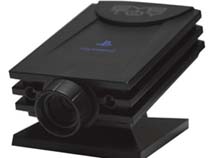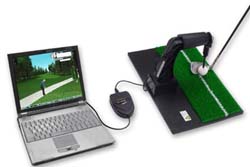
NEW YORK (CNN/Money) � I was cleaning out the closet this weekend when I ran across an old friend � my trusty Sidewinder force feedback joystick.
When I first picked it up in 1997, it was one of my most prized gaming possessions, bringing games like "Interstate 76" and the "Wing Commander" series to life. Saturday, I realized I hadn't given it a second thought in at least five years. Times change fast in the gaming world.
About the only people who still use joysticks today are flight simulator fans � an enthusiastic, but microscopic niche. Most gamers have moved on to gamepads and mouse/keyboard combinations.
The mouse and keyboard are probably pretty safe. Until someone manages to get voice recognition working well and touch screens become much more affordable, there won't be a better way to interface with your PC. It's only a matter of time, though, before game consoles move onto the next control interface. In fact, we're starting to see migration already.
Despite Nintendo's reputation as an innovator, it's Sony (SNE: Research, Estimates) that seems to be leading the charge in new directions. The EyeToy peripheral has sold over 4 million units worldwide, with new games � and uses � on the way. Using a small, motion-sensitive camera that sits on top of your TV, the EyeToy physically puts you in the game, letting you use your body to control onscreen action.
Early games for the peripheral were fun, but not real complex (i.e. "Wishy Washy," where you waved your hands in the air to 'clean' a window on screen). As Sony and other publishers become more familiar with the EyeToy, though, they're creating more advanced games, such as "AntiGrav," which uses your body and arm movements to control an on-screen character as he or she pulls off Tony Hawk-style moves.
 |
|
| Sony's Eyetoy |
Let's not forget the "Dance Dance Revolution" dance pad, either. While it gained its fame in arcades, home versions of the controller have been available for years. Their only use, though, was with home versions of "DDR". Now they're beginning to branch out. "Athens 2004," a Sony-developed Olympic-themed title, uses the dance pad to let players run the 100m dash, jump the pommel horse (through the use of creative footwork) and participate in over a half-dozen other events.
Is it a huge leap from "DDR"'s step-on-the-arrow-at-the-appropriate-time gameplay? No. But it's a creative use of an alternate controller. And it's a heck of a lot better playing the game this way than with the standard PS2 controller, which turns "Athens 2004" into a generic button masher. This way, you'll raise your heart rate and avoid carpel tunnel.
The dance pad might be expanding its range, but that's not really possible for some alternate peripherals. That's not necessarily a bad thing, as several of these are lots of fun, but they're for enthusiasts only and will likely never move beyond a single genre.
Take, for instance, Qmotions' recently introduced Indoor Golf Simulator. Hook it up to your PC and you can play EA's (ERTS: Research, Estimates) "Tiger Woods Golf" with real clubs instead of your mouse. Arguably, you could learn to improve your swing when you head out to the links. At worst, you get a more involved video game experience and, again, raise your heart rate. But at $200, you've got to be a huge golf fan to get your money's worth.
 |
|
| Qmotions' indoor golf simulator |
For me, though, the most interesting control device on the horizon comes from an unlikely source. "The Journey to Wild Divine" is a game only in the loosest sense of the word. The publishers, in fact, prefer the term "personal spiritual quest".
If you rolled your eyes at that, "Wild Divine" the game might not be for you. Imagine "Myst" with less sophisticated graphics and super-size helpings of new age philosophy. What's groundbreaking, though, is the game's control mechanism.
| EXTENDED PLAY
|

|
|
|
|
Three sensors hook up to your fingers, keeping watch on your heartbeat and skin conductivity (basically, your sweat glands). Through breathing exercises � and sometimes, if you're overstressed, like me, by closing your eyes and literally lying down � you relax yourself or increase your energy level, which, in turn, allows you to complete the game's tasks. These include stacking rocks and conjuring a magical stairway. It sounds a bit odd, I know, but it works � and it's actually a heck of a fun experience. (It's not a cheap one, though. "The Journey to Wild Divine" goes for $160.)
 |
|
| "The Journey to Wild Divine's" biofeedback sensors |
The use of biofeedback could be just a first step for gaming. Earlier this year, scientists publicly demonstrated a wireless headset gamers could wear, which allowed them to control onscreen action solely with their brain waves. It's still preliminary � and definitely won't be ready for retail distribution anytime soon, but it raises all sorts of possibilities.
Don't get me wrong, gamepads won't go away anytime soon. But take a deep breath and you'll smell change in the air. After all, when's the last time you used a joystick?

Morris is Director of Content Development for CNN/Money. Click here to send him an email.
|

